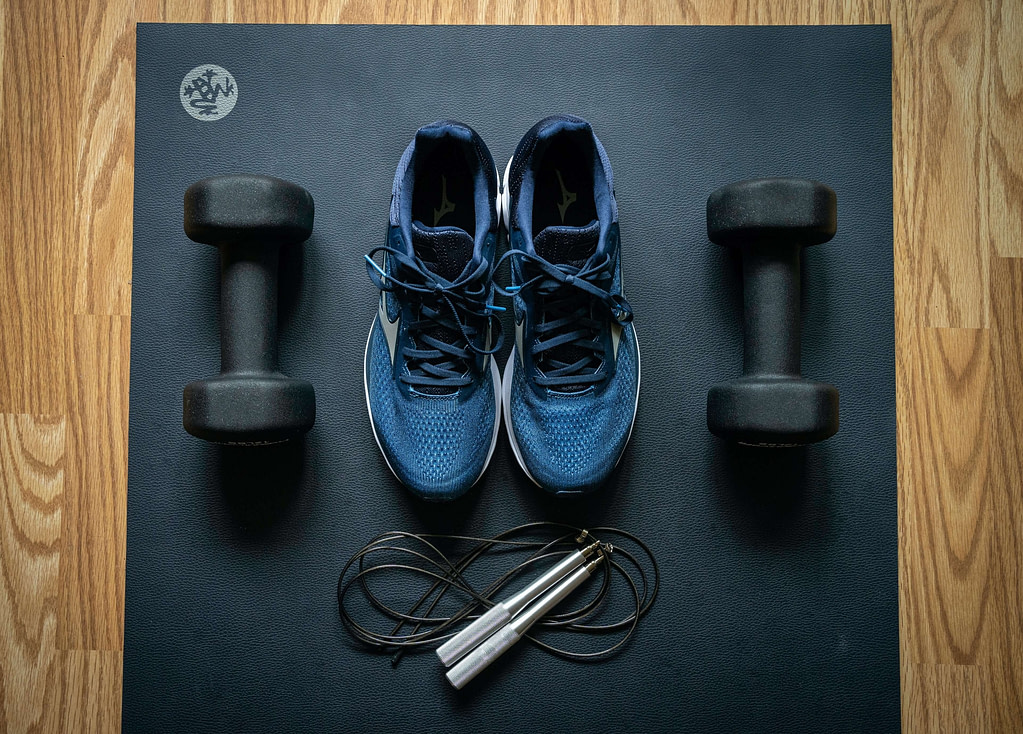According to eMarketer, the future has never looked so bright for fitness apps. The research company predicts that the spike in interest in fitness apps* in 2020 will prevail well into 2022 and beyond, with the number of app users set to remain at approximately 86 million worldwide. No doubts that these numbers are encouraging. However, if you build a fitness application for the first time, you can still feel that anxiety and fear of failure. What’s even worse, it can dissuade you from even getting started in the first place.
It is true: it can be challenging to create a fitness app. (Or a gym app, workout app, diet app – you name it.) The good news is, the risks that come as part and parcel of the fitness application development process can be managed with the right strategy and team at your side. This article is here to help you allay some of those fears and give you the insights you need to succeed.
* including workout apps, training apps, yoga apps, and other fitness solutions
How to Make a Fitness App – Things That Can Go Wrong
Below, we provide a list of fears that you might experience. Each of them will be followed by tips on how to prevent any of your worries from coming to fruition.
Fear #1: I will run out of budget before the app is ready to launch
According to Failory, financial problems are the reason for as many as 16% of all startup failures. When you decide to build your own fitness app, the costs associated can be challenging to predict upfront. Thus, you might be worried that you will run out of money before the app is finished and ready to bring revenue, leaving you stranded. You worry that in the worst-case scenario, you will have done all the hard work but won’t be able to realize the returns or recoup the investment because your fitness app is nowhere near being ready to launch.
How to prevent this?
There are three key elements we recommend:
- When building fitness applications, you should follow the time & material methodology. In this model, the product development contractor is paid based on the man-hours spent on work. As the scope changes due to continuous user feedback, it allows you to work in an Agile way and adjust your product to changing requirements. To ensure that you don’t exceed your budget, you can agree with your contractors on the maximum number of labor hours you can afford each month.
- Work in iterations. After each iteration, you should have a working prototype of some sort. That way, you are constantly finishing elements rather than leaving things in no-man’s land. You may have lots of ideas for many fitness app features. But the truth is, you don’t need to have all of them in the first version of your fitness app. When you focus on the right things, you can fast-track the app development while still keeping to a very high standard. This can significantly decrease the time to an MVP.
- Lastly, getting involved as the product owner is a must. This might be scary, especially if it’s the first app you’ve ever worked on. Nevertheless, having a bird’s eye view of how things are going with the app development can help you manage the budget successfully and keep things on the right track. We discuss this further in the next point.
Read also: 7 indisputable signs that you need a Product Owner Proxy

Fear #2: I don’t know how to develop a digital fitness product. What if it is time-consuming and I make poor decisions?
When you want to develop a fitness app for the first time and don’t have any experience, it’s natural to be anxious about making the right decisions. Software development teams might ask you questions that you don’t understand, or you might not be able to gauge how well they’re performing. You might fear that it sucks up all of your time and you can’t do anything else.
How to build a fitness application when you lack experience?
Preparation is essential here. The more time you can spend upfront getting to grips with how app development works and what collaborating with app developers entails, the better.
By choosing the right technological partner, you should also have the opportunity to work with a specialist who will act as your product owner proxy. A PO Proxy will take the pressure off of you and support you in backlog management, prioritization, acceptance criteria, and scrum planning. This means that you can use your time to continue growing your business while leveraging the expertise of a trusted partner. While they won’t substitute your role, they can be immensely helpful in translating your priorities and requirements through to the development team. Over time, they can also teach you how to manage IT projects with confidence.
If you’d like to see what the initial couple of weeks entail when you kick off your app development, be sure to download our Cooperation Manual! It’s the very handbook our clients receive when we start working together. Among others, it includes an explanation of daily rituals such as daily standup meetings. It will give you a flavor of what the working relationship looks like.
Fear #3: My fitness app is ready, but we can’t migrate data from our previous solution
Let’s consider one scenario. You’ve built a significant customer base on your current off-the-shelf platform as well as various pieces of content/assets that your users value and appreciate. You are concerned that all that accumulated data and goodwill won’t be transferred successfully and that you’ll lose it all. Kroll Ontrack survey showed that 32% of respondents had experienced data loss when switching to new software, so you’re not alone in this one.
How to prevent data migration problems?
You need to do your homework before you make the switch. Communicate early with your technology partner to make sure that it is possible to port your data across. Identify what steps need to be taken to succeed, including any manual work that might be required. Do all the work ahead of time to plan out potential solutions in collaboration with your app development team. When the time comes, there won’t be any nasty surprises.
Read also: How artificial intelligence is changing the landscape of fitness in 2021
Fear #4: I will lose some of my users as they won’t even bother to change platforms
Some people don’t like change, and specific customers might be very used to the current platform, having acclimated to its various quirks. While you can expect many of your clients to follow you wherever you go as they’re attached to your trainers, others will be more resistant to change. The very idea of moving to a different platform will be discouraging, and there is a risk that they won’t be motivated enough to switch. To make sure that you don’t lose them forever, you need to take the necessary steps ahead of time and help them ease into the new experience.

How to prevent this and encourage users to use your fitness app?
It all comes down to good communication and messaging. You should tell your customers well in advance that you’re moving to a new platform and empower them to be a part of the process. Consistently ask them for feedback and let them co-create features with you. To sweeten the deal even further, you can give bonuses for loyal customers such as free credits, early access to the application, or exclusive access to specific courses. If the users feel like a part of the transition, they are much more likely to follow along and jump across. It’s well worth doing. The research from Bain & Company showed that a mere 5% increase in customer retention produces more than a 25% increase in profit.
Fear #5: The app will not meet user expectations (your customers’ and your administrators’)
This fear somewhat relates to the previous one on the list. You worry that you won’t be able to deliver on the promises, and users will deem the app a disappointment. There is a risk that if your new platform doesn’t deliver the quality and features that are expected of it, customers will switch to a competitor.
How to prevent this and make fitness apps that users love?
Before you start with product development, conduct user interviews and identify precisely what expectations your users have for your particular fitness application. Don’t rely on your own intuitions or assumptions! Talk to users as much as possible so you are clear about what is most valuable for them. This should provide the insights you need to build an app that has the right product-market fit.
United Airlines, for example, was able to double the number of daily sessions and increase online ticketing by 200% just by conducting user research. That said, bear in mind that you don’t necessarily have to run user research on a big sample. Jakob Nielsen, Co-Founder of the famous NN Group, has long proven that testing with just five users can uncover up to 85% of usability problems.
to boost customer experience for the existing clients and reach over 20,000 new users
Fear #6: The app won’t be future-proof, and I’ll need to build a new one in 2-3 years
In the ever-changing fitness landscape, it’s normal to worry that the app you build today will be irrelevant in a few years’ time. You might be wondering: “what if I have to create a fitness app all over again?”. This could certainly translate to a massive amount of wasted time and resources if you have to keep rebuilding.
How to prevent it?
When trying to be future-proof, read about tech trends. Spend some time forecasting where you think the industry will be in the coming years. As far as tech advancements are concerned, once again, working with the right product development team will help a great deal. Talk to the developers or product owner proxy about the trends that are on the horizon. Do it even if you’re not quite ready to act upon them yet. You want to be on the cutting-edge of the fitness app market, ensuring that your app is up to date with the latest developments.
For one, Artificial Intelligence (AI) and Augmented Reality (AR) are two trends worth keeping an eye out for. You could, for instance, agree with the product team to design your app’s architecture as AI and/or AR-ready. When the right time comes, it will be easier to implement into your application.
Keep your finger on the pulse, and you’ll be much better positioned to ensure that your app is future-proof.
Read also: Data science, machine learning, and AI in fitness – now and next
Summary
There you have it – the six common fears around building fitness apps. It’s natural to be concerned about these things. Hopefully, this article has illustrated that most of these can be prevented with the proper preparation and mindset.
When you ask yourself how to make a fitness app, the bottom line is that it’s crucial to work with the right technology partner. They will guide you through the process and help create a fitness application that your customers will love.
Find a company whose expertise and experience are aligned with the fitness industry. That way, you’ll sidestep most of the common problems fitness application founders face. With just a little bit of foresight, you put yourself in the best possible position to succeed.
We can’t wait to see what you build!
Discover a step-by-step guide to fitness app development
